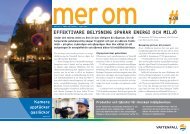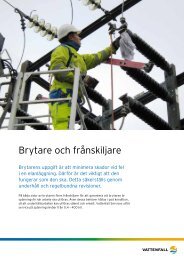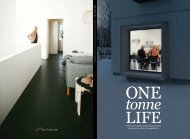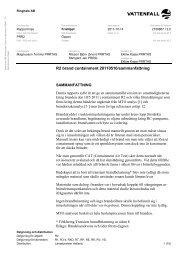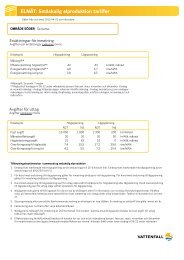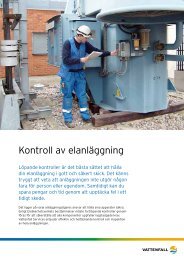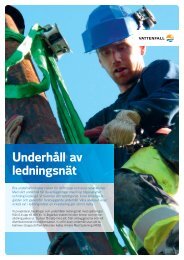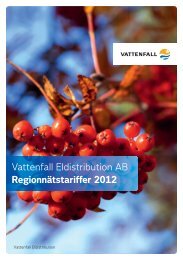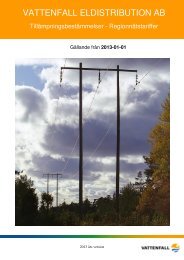This environmental impact assessment for Kriegers flak ... - Vattenfall
This environmental impact assessment for Kriegers flak ... - Vattenfall
This environmental impact assessment for Kriegers flak ... - Vattenfall
You also want an ePaper? Increase the reach of your titles
YUMPU automatically turns print PDFs into web optimized ePapers that Google loves.
166 CABLE LAYING<br />
16.2 Design<br />
The trans<strong>for</strong>mer stations will be mounted on a plat<strong>for</strong>m<br />
standing on four steel legs driven into the seabed.<br />
It is likely that monopile or tripod foundations are to be<br />
used. For in<strong>for</strong>mation regarding these foundations, see<br />
Chapter 5.4.2.<br />
The size of the plat<strong>for</strong>ms will be 40 x 40 metres.<br />
They are to be placed about 10 metres above sea level<br />
and the trans<strong>for</strong>mer stations will be about 15 metres<br />
high. The total height of the construction above sea<br />
level will be about 25 metres.<br />
Equipment on the trans<strong>for</strong>mer stations will be installed<br />
to assure that the safety technique will function<br />
in an emergency.<br />
The connection between the wind farm and the grid<br />
is planned via a three phase AC link. All together, it is<br />
likely that four sea cables and four land based cables<br />
will be used. The cable is built up in multiple layers<br />
separated from each other by bitumen. No liquid substance<br />
is used in the cables. The surrounding material<br />
is made of a thick, protective covering containing steel<br />
wires.<br />
The sea cable connecting the wind farm to land will<br />
probably have an outer diameter of between 15 and 20<br />
cm and the weight will be about 80 kg/metre.<br />
The cable used within the wind farm will be thinner<br />
and weigh less than the cable used <strong>for</strong> the land connection.<br />
The cables will be dug, plowed or washed 0.8 – 1.0<br />
metres into the seabed (slightly deeper near the coast).<br />
Where the seabed structure does not allow the cable to<br />
be washed down due to stones, rocks etc, the cable will<br />
instead be securely anchored to the seabed.<br />
At the landing points a shaft will be dug <strong>for</strong> each<br />
cable or alternatively a larger shaft <strong>for</strong> all cables.<br />
Also on land the cables will be dug down to a depth<br />
of about one metre. The laying of the cables will need a<br />
working area of around 8–12 metres. Within this area,<br />
shafts will be dug, cables laid in position and joined.<br />
The cables will be transported to the working area on<br />
cable drums each containing 60-100 metres, depending<br />
on diameter.<br />
Trans<strong>for</strong>mer station, Nysted wind farm





